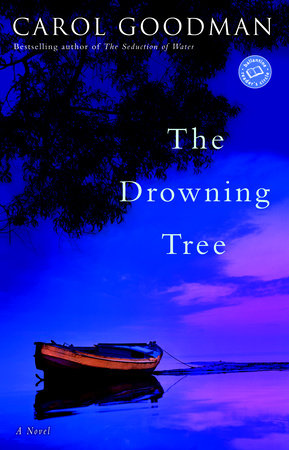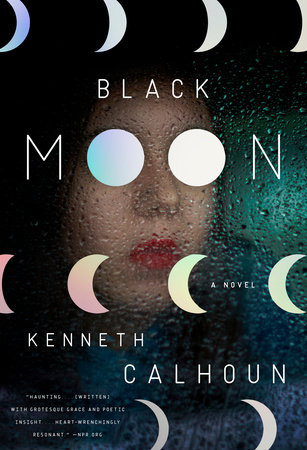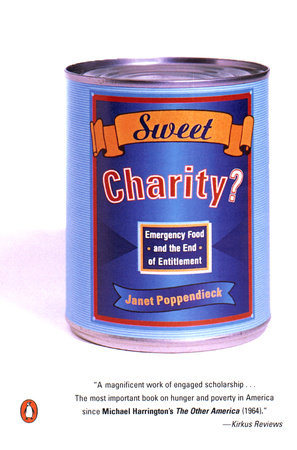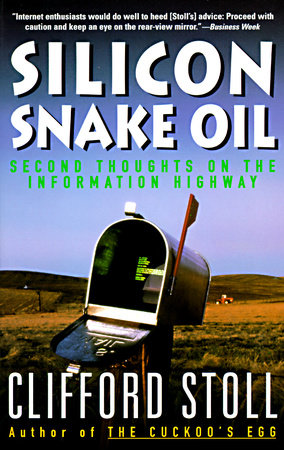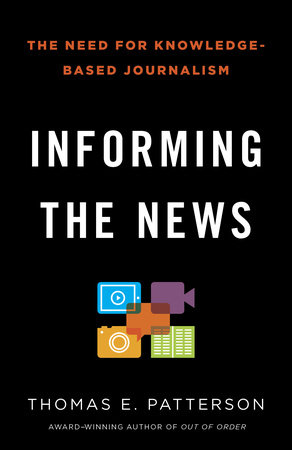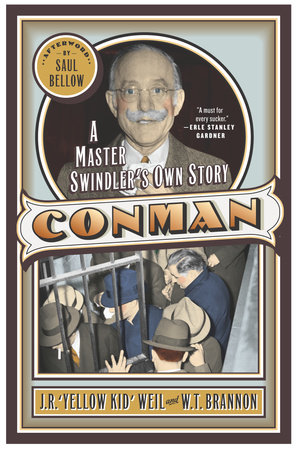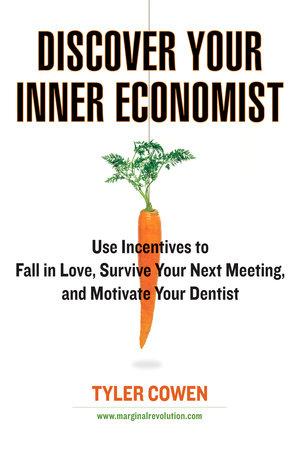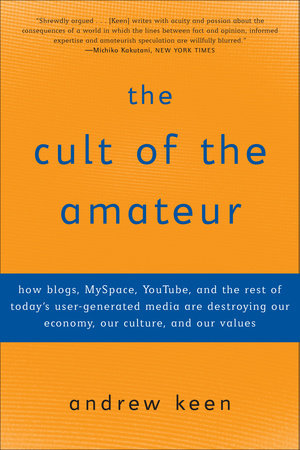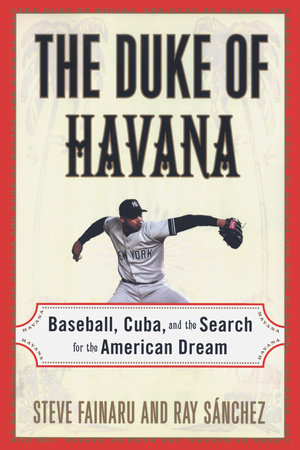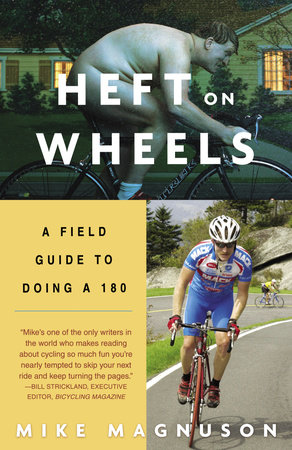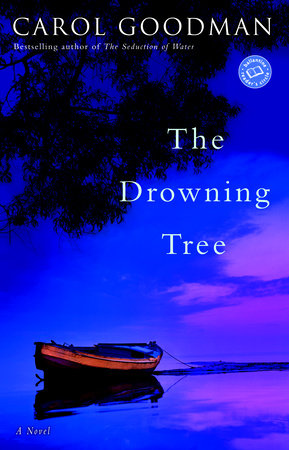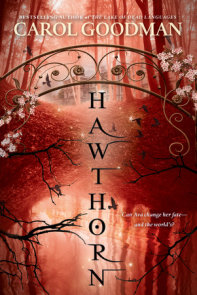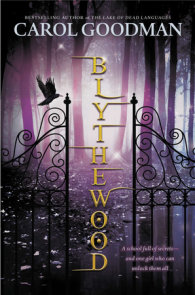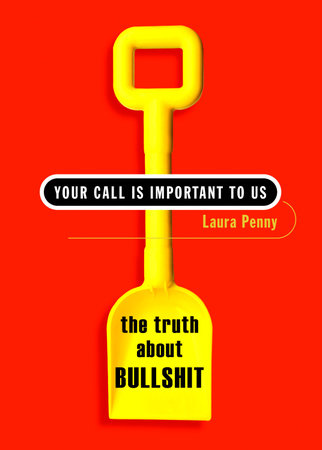Author Q&A
A Conversation with Carol Goodman
Jennifer Morgan Gray is a writer and editor who lives in Washington, D.C.
Jennifer Morgan Gray: Was there a particular character, image, or idea that inspired you to begin writing The Drowning Tree? Did you begin with the vision of a character, a relationship, or, perhaps, a painting?
Carol Goodman: Several years before I started The Drowning Tree, I saw a friend off at Grand Central Station and had the thought, “What if I put her on this train and she never arrives at her destination?” (I’m full of these kinds of morbid musings, unfortunately.) Then, sometime after that, I attended a lecture on the Elena Cornaro window at Vassar, and I pictured two women, one giving a lecture on a stained-glass window, and then the other, seeing her off at the train, getting that last glimpse of her friend in the window and then never seeing her (alive) again. That’s the image I started with.
JMG: The title, The Drowning Tree, could mean many different things, from the literal painting that takes center stage in the book to the more metaphorical. How did you choose this title to grace the book? Were there any other titles that you considered and then abandoned?
CG: The title was originally The Lady in the Window, because that was the central image I started with: the lady in the stained-glass window and Christine seen by Juno through the train window. As I worked on the book, though, the imagery of Ovid’s myths seemed more central to the story I was telling. I especially became attached to the image of the weeping beech tree, so I made up a faux-Ovidian myth to incorporate the weeping beech, and then thought it had a nice ring to it as a title. I like a title that could mean several things, so the fact that “the drowning tree” could refer to the painting or the myth and that the phrase itself was ambiguous (Is the tree drowning? Is it a place where people drown?) made it appealing as well.
JMG: You frame The Drowning Tree with one of Juno’s dreams. Why did you decide to begin the novel in this way? As Neil “had become obsessed with his dreams” (p. 90), how do Juno and the other characters follow suit, being consumed with dreams in both the literal and the figurative sense—the imagined paths and dashed hopes of their lives?
CG: I didn’t write the prologue with Juno’s dream until the book was finished. The first chapter starts the way it does because, as I mentioned above, that’s the image I started with: a woman putting her friend on a train. But when I looked back I realized that the novel becomes as much a story of Juno and Neil as of Juno and Christine (or perhaps the triangle described by the three of them), and I came up with the idea of starting with Juno’s dream. That Juno has been dreaming about Neil is important, both because of the significance Neil attached to dreams in their relationship and because it shows how Juno is still so haunted by her love for Neil.
On a more personal note, I spent years having vivid dreams about someone I loved and had lost, and because this person had believed in “astral projection,” I always had the eerie feeling that he was actually visiting me in my dreams. Curiously, I stopped having those dreams once I finished writing The Drowning Tree.
JMG: In the book’s opening pages, Juno remarks that Christine “chose me to be her best friend” (p. 6). How does this instant attention from Christine affect Juno? Does Juno have agency in choosing Christine as a friend, as well, or is she a more passive participant in that relationship? What would draw each woman to the other?
CG: I’ve always been interested in the idea of one person choosing another. It goes back to the medieval dichotomy between lover and beloved. Juno is validated in some vital way by Christine’s attention, but I think it also clouds her vision of Christine. In other words, Juno sees Christine as this vital life force that is very appealing, but she doesn’t fully see how vulnerable Christine is—how much Christine needs her as much as Juno needs her.
JMG: Christine’s lecture on a painting featuring the Lady in the Window drives the plot of the book. What about the speech is so shocking and revelatory to those around her? What about the painting is so compelling to Christine? To her audience?
CG: Like many institutions, Penrose College has idealized its founder, Eugenie Penrose, and so the community is understandably unhappy at Christine’s suggestion that the window depicts not Eugenie but her sister, Clare. For Christine, though, the Lady in the Window has always been a benevolent presence, a sort of guardian angel. The possibility that she was actually a woman who had gone mad and been institutionalized would be especially disturbing to Christine given her fears about her own mental stability. Each character projects his or her own set of values on the figure of the Lady.
JMG: You write about art in an extremely vivid, tactile way. Did you find it difficult to evoke the paintings that form the core of this book with words? Were there any visual “crutches” you used, like already-existing paintings or sketches?
CG: I’m a frustrated artist and so I get a secret thrill out of describing works of art that I would like to be able to create myself. So, actually, describing the paintings is mostly fun for me. I looked at a great deal of Pre-Raphaelite art (like Christine I covered the walls of my college dorm room with reproductions of Pre-Raphaelite paintings) and read books on the Pre-Raphaelites to get ideas for the “invented paintings” described. It was fun to imagine how artists might have treated different myths—and even to invent one of the myths. Probably the single most important artist whose work I drew from was J. W. Waterhouse. I have a copy of his Ophelia hanging above my desk even now.
JMG: The river is a living, breathing character in the novel, and I was struck with how the blueprint of the book itself mirrors a river—constantly churning with possibilities that engulf the reader. Was this intentional on your part as you were writing? How do you view the river as a living, breathing character in the book?
CG: I think it’s become second nature to me by now to use the landscape to mirror the moods of my characters, and certainly the Hudson presented itself as a rich, moving canvas. When I started this book I thought that for once I’d stay away from water imagery, but then I read about the construction of Dia: Beacon [museum] and decided I wanted Juno to live in an old factory on the Hudson. Then I took a little kayaking trip on the Hudson, and I was so awed by the sensation of being out on the river in that little boat (which I found every bit as terrifying as Juno did) that I knew that experience would be the visceral center of the book—that feeling of being swept up in something larger than oneself.
JMG: The story of Augustus, Eugenie, and Clare emerges from Christine’s research and, most vividly, from Eugenie’s journals. Why did you choose to construct the book so that Juno reads about the Penroses in Eugenie’s own words?
CG: I got the idea of the hidden journal pages from a stained-glass restorer who told me that medieval workmen sometimes stuffed papers into the crevices of frames. I just loved the idea of finding a hidden manuscript—sort of like a message in a bottle. Once Juno had those papers I had to create Eugenie’s voice, which seemed as good a way of telling the past story as any. I often end up using some kind of “text within a text,” like the sections of the mother’s fantasy novel in The Seduction of Water or Jane’s old journal entries in The Lake of Dead Languages. I don’t know why. It appeals to me in a very primal way, the way finding a hidden treasure map is exciting for a child.
JMG: Christine and Neil seem to share some striking similarities—from their larger-than-life personalities to their predisposition toward addictive behaviors and mental illness. Why, then, does Juno become the object of Neil’s affection? What about her is so compelling to both Neil and Christine? With that affection for her best friend in mind, why would Christine embark on an affair with Neil many years later?
CG: Funny, I’ve thought more about why Juno would be drawn to them than vice versa, because, I suppose, I’ve found myself drawn to people like Neil and Christine many times in my life—people who are charismatic and larger than life. I never wondered why they would be drawn to someone like me—someone who tends to be a little quieter and shyer. I suppose Neil and Christine might have been attracted to her relative stability. As for why Christine has the affair with Neil—I think there was always an attraction simmering below the surface, and Christine is, I think, a person who might act impetuously. It’s part of her charm, but also one of her flaws.
JMG: You present the specter of mental illness as haunting the entire town of Rosedale. What does the physical entity Briarwood represent to its residents, both terrible and worthy? How are the approaches of Neil and Christine toward mental illness similar? How are they different?
CG: I liked the idea of the physical presence of Briarwood looming over the countryside as some gothic specter of madness. I hoped it would echo the way many of the characters feel haunted by mental illness, either in their family history or in the recesses of their own personalities. The main difference between Neil and Christine is that Neil is obviously much more impaired by mental illness. Also, as an artist, he’s afraid that medicating his ailment will also destroy his art. Christine, on the other hand, has spent most of her adult life trying to self-medicate.
JMG: Art and mythology—and their interweaving nature—play paramount roles in the book. Do you have a particular background or interest in either of those disciplines, or did you research them as you were writing? Was there one myth that came to mind in particular as you were crafting the novel?
CG: Art and classical mythology are both subjects I studied in college and that I’ve continued to read about and take classes in. Since my first novel I’ve tried to incorporate mythology or fairy tales into the story. In The Drowning Tree I decided to focus on the mythology that was most often used by the Pre-Raphaelites, including classical mythology, fairy tales, Arthurian legends, and Romantic poetry. Instead of focusing on one myth, I wanted to use a corpus of myths that would seem to populate the whole fictional world in the book.
JMG: You explore the mother-daughter relationship in different ways here, from Juno’s positive rapport with Bea and her loving if short-lived relationship with her mother, to Christine’s difficult time with her mother. How does Juno evolve as a mother as the book continues? What kind of mother might Christine have made?
CG: Juno recognizes during the book that although she lost her own mother early she had the advantage of that early support. I may have been reflecting on my own mother’s experience. She lost her mother when she was quite young, but she’s always maintained that her early childhood experience of a warm and loving family gave her an inner security that saw her through that trauma. As a mother, I believe that that early sense of being loved is the most valuable thing you can give a child. I think that by the end of the book Juno is able to look at Bea and realize that Bea has that inner strength and that whatever they have to go through together—the pain of losing Neil, for instance—they’ll be able to endure.
I can’t predict what sort of mother Christine would have been. Although scarred by her upbringing, she’s clearly capable of loving and that, I think, is half the battle.
JMG: Juno remarks that Penrose inhabits a place apart from the rest of the town and the world. How does the uneasy relationship between the town and the school affect both communities? Was the school based on any college in particular?
CG: I suppose it’s inevitable that Penrose resembles my own alma mater, Vassar, in some ways, although I pictured it rather differently. Certainly Vassar has the same sense of being an idealized enclave set apart from the working-class town outside its gates, and it does have the Elena Cornaro (first woman doctorate!) window in the library. However, I picture Penrose as smaller and younger than Vassar and more artistic and socialist in its origins. Maybe a little more like Sarah Lawrence. I pictured its setting something like Mount Saint Vincent’s. Ultimately, though, it’s a product of my imagination.
JMG: In his eulogy, Gavin characterizes Christine as “too relentless in her search for the truth” (p. 123). How true is this assessment? What else motivates her scholarship on the paintings and at Penrose? How do other characters in the novel also search for truth?
CG: Well, Gavin sees it that way because the truths that Christine was trying to uncover were uncomfortable for him. I see Christine as a person who speaks her mind even when it makes others around her uncomfortable. This is a trait I admire, but which I think I sometimes lack. I’m more the sort of person who second-guesses and worries endlessly about how my words will affect other people. I’m probably more like Juno, who, at the start of the novel, has avoided really facing what happened to Neil. By the end of the novel she’s developed a bit more gumption—something I’m always striving to acquire more of myself.
JMG: Like other novels that you’ve written, including The Seduction of Water and The Lake of Dead Languages, The Drowning Tree is at once a literary novel and a mystery. What about thrillers and mysteries entices you? Does the compulsion to solve a puzzle drive you while you’re writing? While starting the book, did you know that Christine’s death would be a motivating factor for the action that transpires—and did you know who killed her?
CG: I like reading mysteries, although my favorite mysteries tend to be quirky, cross-genre ones. The puzzles that interest me the most are puzzles of character—why people are the way they are, how they got that way. When I start a book I start with a character whom I don’t completely understand—someone who’s in a situation that I find intriguing. What I want to know is how she got into this mess and how’s she going to get out of it. I think it’s exciting to combine this sort of personal dilemma with a wider, far-reaching mystery—something where the consequences of not finding out the solution are dire. So I knew that Christine’s death would be the event that sets everything into motion. I had a good idea who killed her. But I wasn’t sure how Juno would find this out or how it would change her life.
JMG: How did you pick Juno’s name? Did you also choose the name Christine—reminiscent of an important figure in Christian faith—on purpose?
CG: Usually I have an elaborate rationale for a character’s name, but in this case I knew I wanted something mythological and I just liked the sound of Juno!
Christine does study early Christian icons, but I didn’t mean for her to symbolize any abstract value. Again the name just sounded right to me. It might have had something to do with the connection between crystal and glass. Her last name is more significant. Webb—like the web that the Lady of Shalott weaves on her loom.
JMG: There’s a tension that exists between the romantic artist—Neil—and the science-steeped doctor, Dr. Horace. Both of these individuals, however, grapple with madness and do so in very different ways. What parallels were you interested in drawing between these two different mind-sets and ways of approaching life?
CG: Well, I’d hate to have Dr. Horace taken as an embodiment of science or medicine, since I’ve certainly known many commendable men and women in those fields. In fact, in researching this book I talked to several psychologists who were extremely helpful and compassionate, and the genetic counselor who answered all my questions about genetic testing (after she told me that I didn’t have the breast cancer gene) was one of the nicest people I’ve ever met. Dr. Horace, though, falls victim to the danger of thinking that you can medicate every problem, while Neil has been perhaps too resistant to the benefits of medication. The conflict interests me because of the proliferation of psychopharmaceuticals in our society.
I often find myself suspicious of the quickness with which doctors prescribe drugs like Prozac or Ritalin, but I’ve also always tried to keep an open mind about the benefits of such drugs.
JMG: What, ultimately, do you think Juno realizes about love? How has her attitude changed—if at all—from her youthful perceptions? How do her feelings about Neil differ from those she harbors toward Kyle? What about Detective Falco strikes a chord in her heart?
CG: A theme that runs through much of my writing is the idea of an early lost love and whether it’s possible to get over that loss—will anyone else ever be able to take the place of that person? When the novel begins, Juno hasn’t been able to move on from the breakup of her marriage with Neil. She uses her responsibilities to Bea as an excuse to keep herself emotionally sealed off. She’s unable to connect to Kyle, for instance. Daniel Falco is the first man since Neil who breaks through that protective covering,
I think, perhaps, because he’s the first person to really see her suffering.
JMG: Neil makes the ultimate sacrifice at the end of the novel, saving Juno’s life but losing his own in the process. Why does he do so? What did Juno, in turn, sacrifice for her ex-husband?
CG: I think Neil saves Juno’s life because he loves her. Juno tries to save him, as well, and might well have drowned if she hadn’t imagined right at the end that she saw Neil transformed into a seabird coming toward her over the water. I’d like to think that that vision is also Neil’s way of saving her.
JMG: Are there any creative rituals or processes you follow when you’re writing? Anything in particular you did for this book?
CG: I wouldn’t necessarily call it ritual so much as a routine and research. I walk a few miles every morning before writing, and then I always write my drafts in long hand in black-and-white marble notebooks. I used the notebooks before I wrote The Lake of Dead Languages, but once I used them as a plot element in that book I became superstitiously attached to them. I also try to surround myself with images from the world I’m writing about, so I found copies of Pre-Raphaelite paintings to hang over my desk. I visited the Cloisters several times in the course of writing the book and walked in the Ramble in Central Park and looked at a lot of stained glass. I even took a class in making stained glass—and discovered that I’m really bad at it!
JMG: What can your readers expect to see next from you?
CG: I’ve just finished the first draft of a novel set in an artists’ colony on the edge of the Adirondacks. Half of the book takes place in the nineteenth century and concerns a medium who visits the estate (before it becomes an artists’ colony) and performs a séance there. The book has more of a supernatural element than I’ve ever used before. And yes, it has water, but here the water is all underground in the springs that feed the estate’s elaborate fountains, and they have, in the present part of the story, dried up. I had great fun learning about nineteenth-century mediums and planning the formal Italianate garden.
